After spending a dream-come-true afternoon at The Gnome Reserve in the WAY remove countryside of England, I found myself searching for something else interesting to do in North Devon.
Something…oh I don’t know…England-y, something country-ish, something off-the-grid. Something like Clovelly.
I think I first learned about Clovelly from TripAdvisor. It’s a small village in the Torridge district that’s intentionally stuck in time in the mid-19th century. It’s known for steep cobblestone streets that allow donkeys, but not cars. It’s also known for it’s lovely coastal views over the Bristol Channel.
Interestingly, Clovelly is a privately owned city that’s been under the control of the same family since 1738. In fact, it’s been run by just three families since the middle of the 13th century – nearly 800 years! According to the most recent census, around 443 people call this place home today.
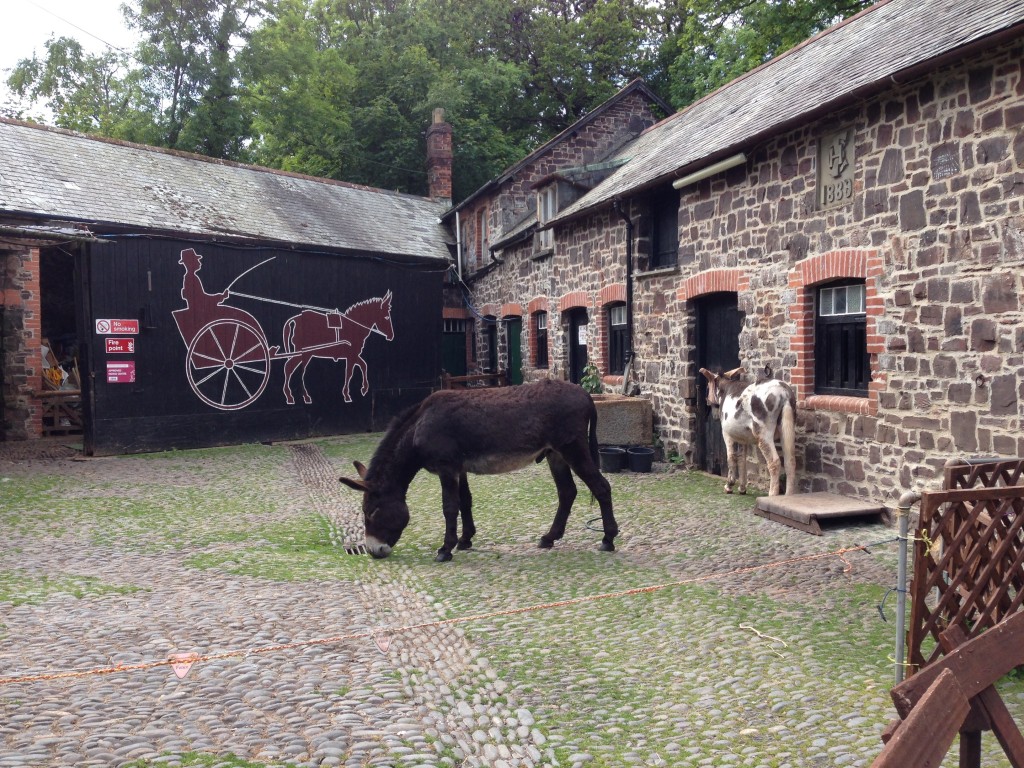 Visitors are required to park at the top of a hill and enter through the Visitor’s Center. It costs £6.95 to get into Clovelly, which goes towards building maintenance and historic restoration.
Visitors are required to park at the top of a hill and enter through the Visitor’s Center. It costs £6.95 to get into Clovelly, which goes towards building maintenance and historic restoration.
We caught the last 5 minutes of the 20-minute video that tells about the village’s history and picked up a brochure to fill in the gaps. After passing by some resident donkeys, we took a stroll to check out the silk and pottery craft workshops before they closed for the day.
 The cobblestone streets here are too steep for cars, so donkeys were used as the primary means of transportation for centuries. Now it seems that the donkeys are more of a tourist attraction than a source of hard labor, but motor vehicles are still prohibited. Everything from groceries to building materials are now hauled up and down by sledge.
The cobblestone streets here are too steep for cars, so donkeys were used as the primary means of transportation for centuries. Now it seems that the donkeys are more of a tourist attraction than a source of hard labor, but motor vehicles are still prohibited. Everything from groceries to building materials are now hauled up and down by sledge.
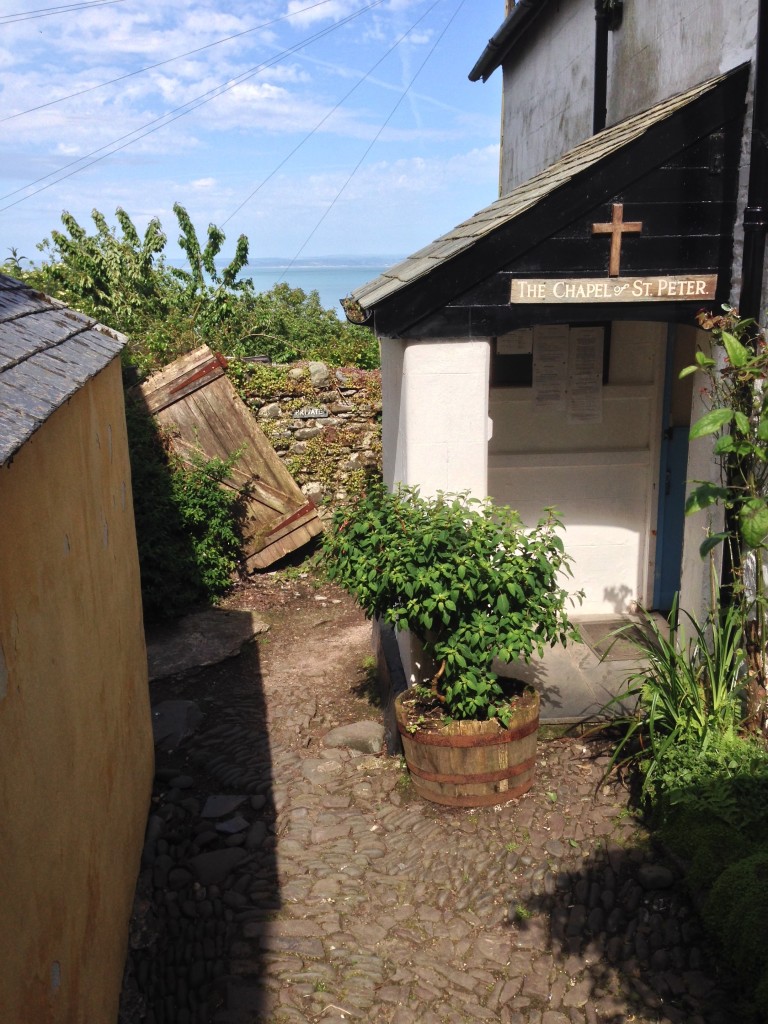 The buildings here are ridiculously cute, from old-timey inns to chapels and houses that you swear people must not truly live in…but they really do.
The buildings here are ridiculously cute, from old-timey inns to chapels and houses that you swear people must not truly live in…but they really do.
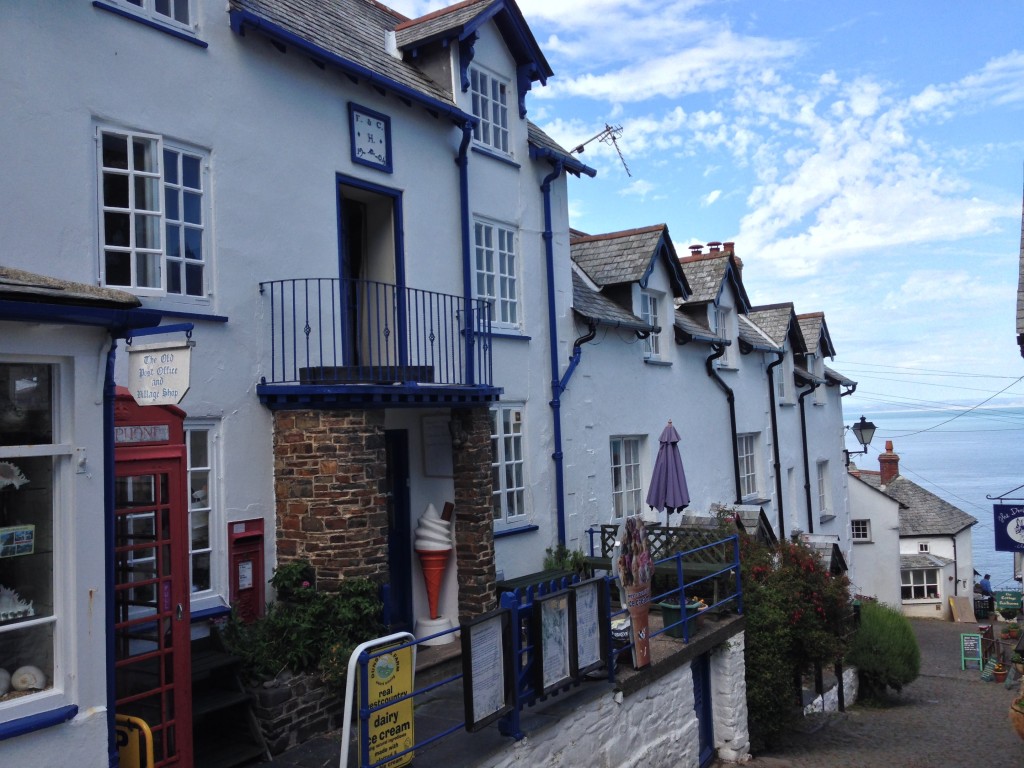 It was about 5 pm when we were talking around, which is when many of the shops were closing. But I didn’t mind. Closed shops meant less temptation to break the Eurotrip budget, and it’s not like any more trinkets would fit in my backpack anyway. Closed shops also meant less crowds…which is perfect in a place like Clovelly.
It was about 5 pm when we were talking around, which is when many of the shops were closing. But I didn’t mind. Closed shops meant less temptation to break the Eurotrip budget, and it’s not like any more trinkets would fit in my backpack anyway. Closed shops also meant less crowds…which is perfect in a place like Clovelly.
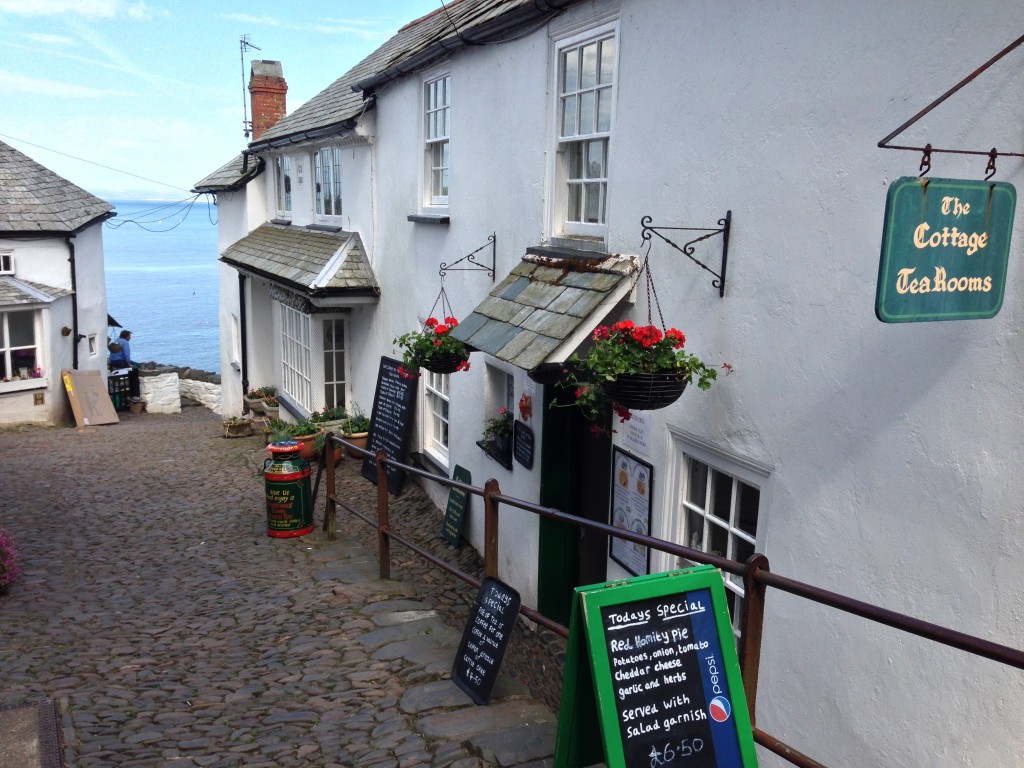 However, a few restaurants and bars remained open and we were able to snag some traditional English grub and a couple beers before heading home at the end of the day.
However, a few restaurants and bars remained open and we were able to snag some traditional English grub and a couple beers before heading home at the end of the day.
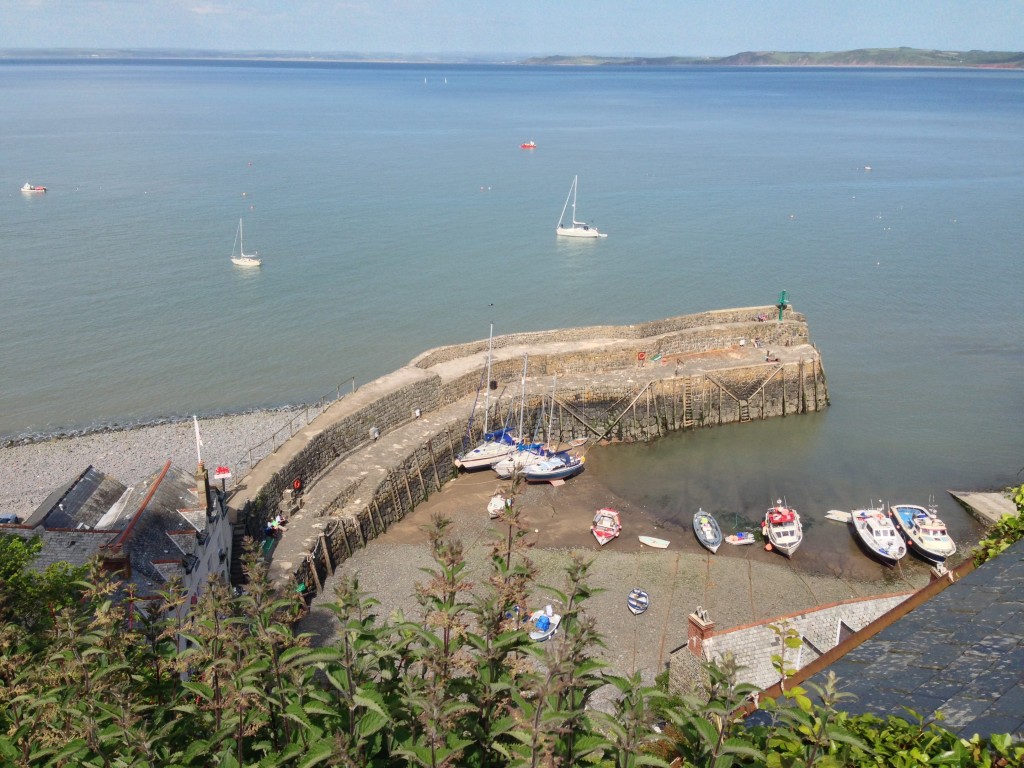 But what I loved most about this place was the seascape. I’ve always been a sucker for little towns along the shore, and this was by far one of most serene and beautiful ones I’ve visited. Clovelly used to be a fishing village, which isn’t surprising, considering its perfect location and plethora of boats.
But what I loved most about this place was the seascape. I’ve always been a sucker for little towns along the shore, and this was by far one of most serene and beautiful ones I’ve visited. Clovelly used to be a fishing village, which isn’t surprising, considering its perfect location and plethora of boats.
 One thing that surprised me though was the waterfall. As if this village wasn’t beautiful enough, someone had to stick a waterfall in there too.
One thing that surprised me though was the waterfall. As if this village wasn’t beautiful enough, someone had to stick a waterfall in there too.
You have to hike across some medium-sized pebbles and stones (a little rough in flats with minimal support) from the main cobblestone path to reach it, but when you do, you can walk right up to the waterfall. Behind it is a cave, where it’s rumored that the Arthurian magician Merlin was born.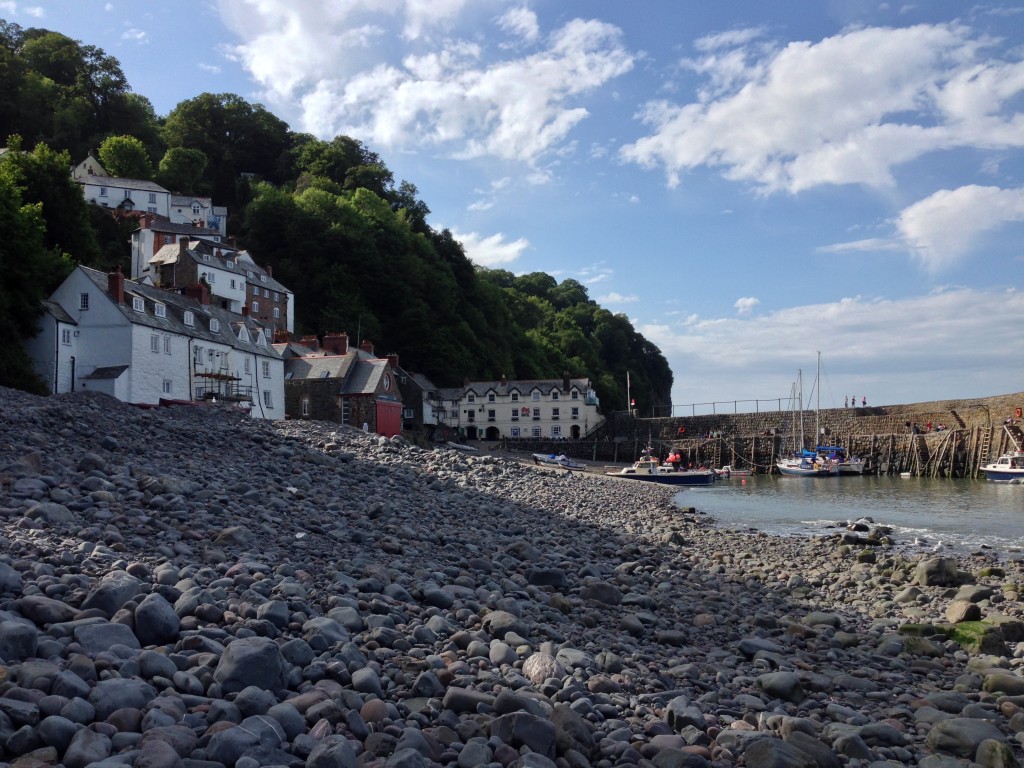 Speaking of magic…the air was warm (finally!), the sun was shining bright, and funny blobs of clouds dotted the sky.
Speaking of magic…the air was warm (finally!), the sun was shining bright, and funny blobs of clouds dotted the sky.

Author Charles Kingsley lived in Clovelly as a child, and the town inspired him to write Westward Ho and The Water Babies. Over a century and a half ago, here’s how he described the village:
Suddenly a hot gleam of sunlight fell upon the white cottages, with their grey steaming roofs and little scraps of garden courtyard, and lighting up the wings of the gorgeous butterflies which fluttered from the woodland down to the garden.
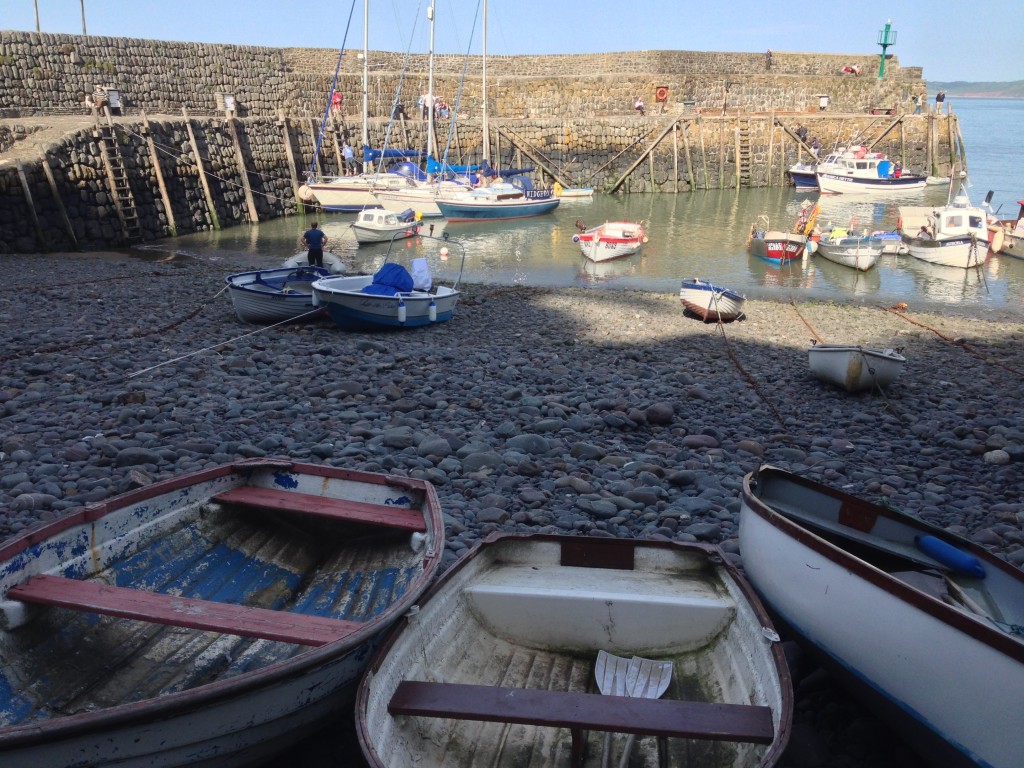 And these boats aren’t just for decoration either. If you have a little more time to spend here than we did, you can book a fishing trip or a boat excursion to nearby Lundy Island at the Visitor’s Center.
And these boats aren’t just for decoration either. If you have a little more time to spend here than we did, you can book a fishing trip or a boat excursion to nearby Lundy Island at the Visitor’s Center.
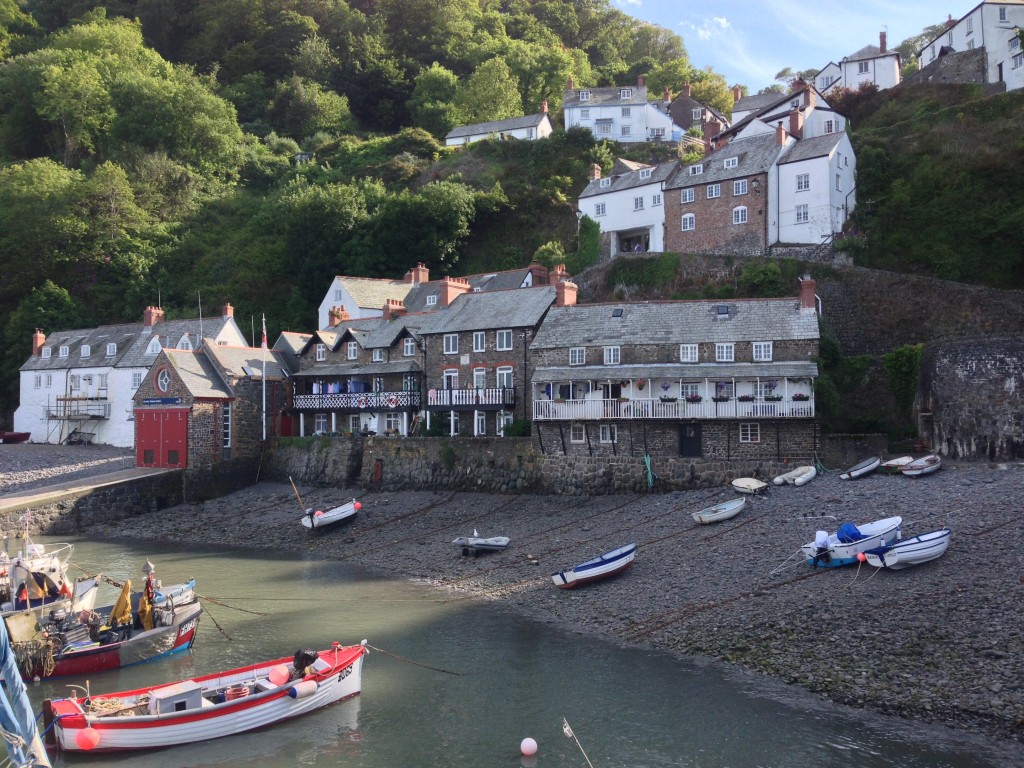 There are two hotels in town…one at the top and one at the bottom. The one at the bottom is called the Red Lion, which used to be a coal store and tavern back in the day. There are a couple cottages that offer bed and breakfast accommodations too.
There are two hotels in town…one at the top and one at the bottom. The one at the bottom is called the Red Lion, which used to be a coal store and tavern back in the day. There are a couple cottages that offer bed and breakfast accommodations too. 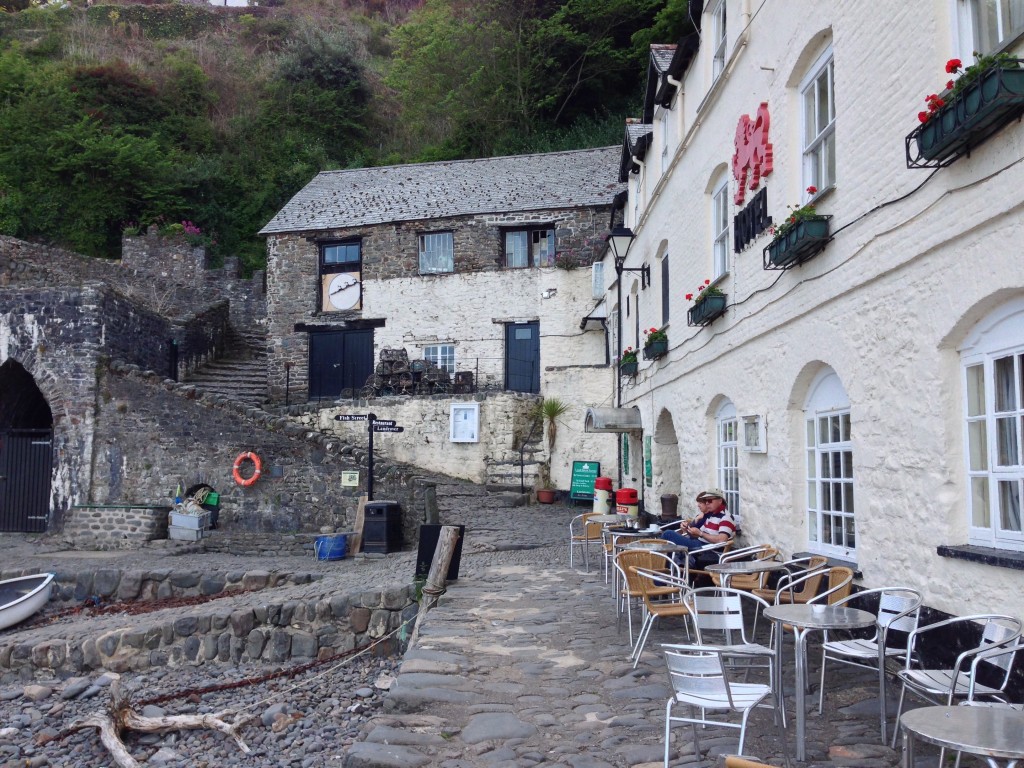 There’s a bar inside the Red Lion where I snagged this beer and took it outside to sip by the dock in the sunshine.
There’s a bar inside the Red Lion where I snagged this beer and took it outside to sip by the dock in the sunshine. After a little beer-fueled relaxation, there was really only one way to go…back up. So I begin retracing my steps and climbing the cobblestone stairs back to the top of the village.
After a little beer-fueled relaxation, there was really only one way to go…back up. So I begin retracing my steps and climbing the cobblestone stairs back to the top of the village.
Little did I know at the time that I’d left my wallet down by the dock and actually had to run all the way down and back up again to find it. Fortunately, it was right where I left it…passport and all. A little extra exercise never hurt anyone.
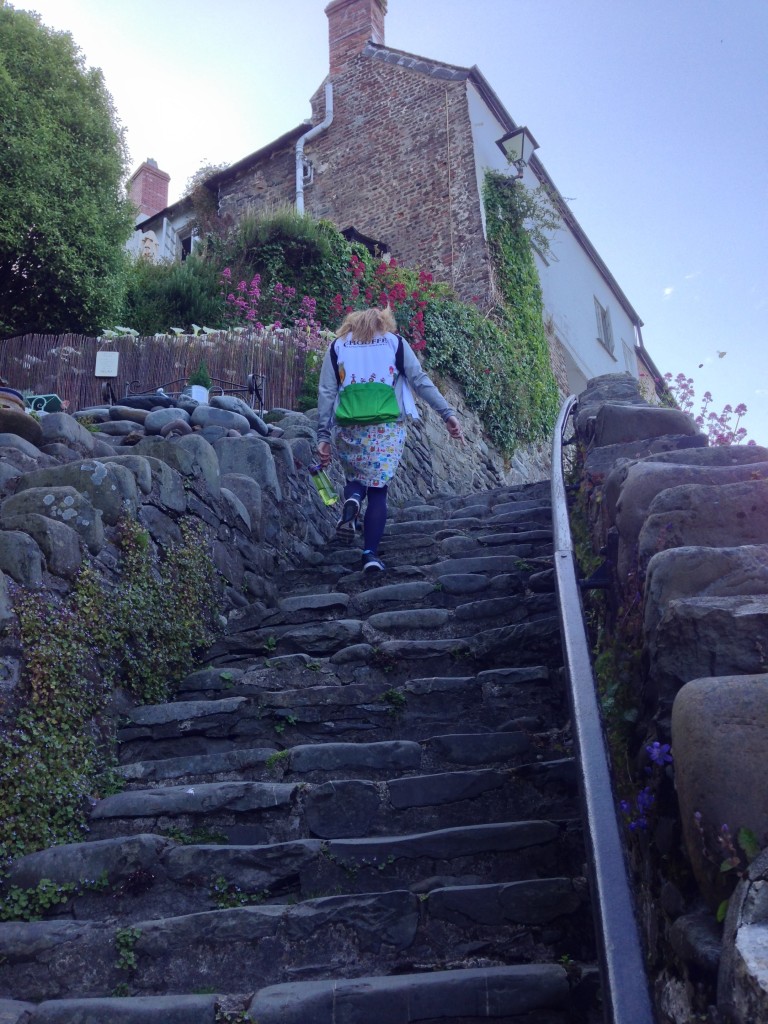
Sure, Clovelly may be categorized as a tourist attraction, but to me it was one of those really unique places I’ll never forget. It’s easy to find historic villages all over the world, but this one had a uncommonly authentic vibe that’s hard to describe.
Clovelly made me forget about checking my smartphone, forget about the conjunctival cyst that was stuck in my eye, and forget about being in a hurry to get anywhere. To me, it felt like a fairytale, but it’s nothing more than real life for hundreds of people who call it home…which is fascinating to me.
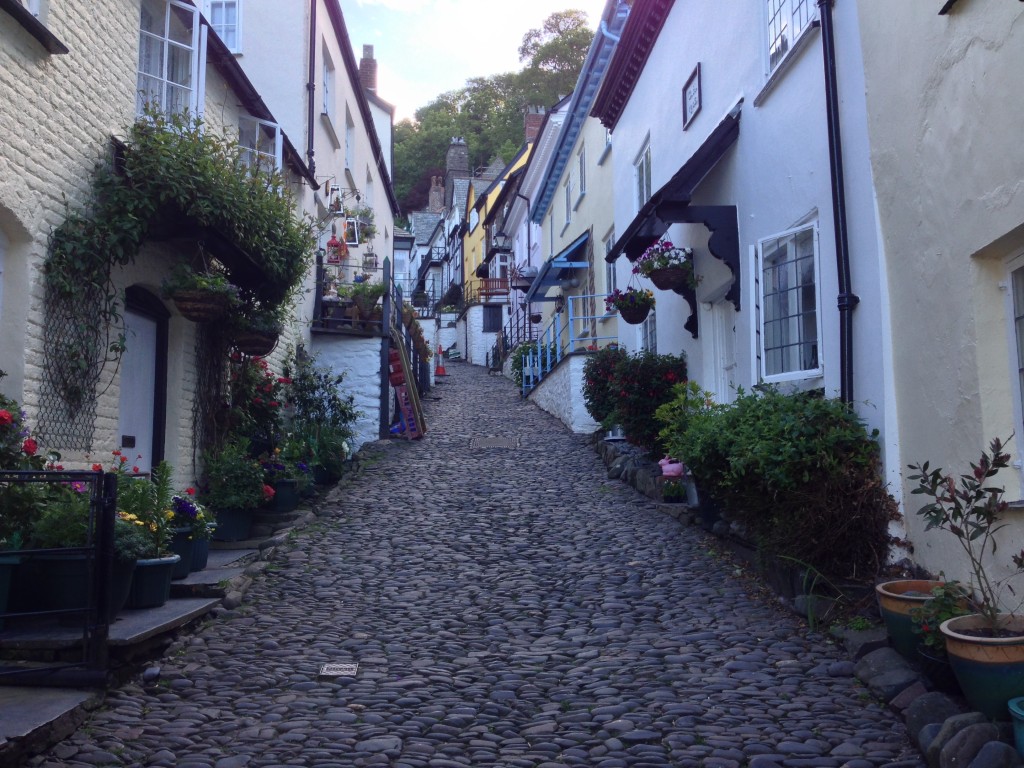
The whole concept behind Clovelly intrigues me and honestly creeps me out a little bit. The village has inspired me to write a fictional short story about the alleged deep, dark secrets of the village’s owner family and why its residents have stayed for so long.
I’m not the first one to have this bright idea either. An 18th century fiction book called The History of John Gregg and his Family of Robbers and Murderers tells the story of cannibalistic bandits who lived in Clovelly and committed over a thousand murders while living in a cave by the sea.
Does Clovelly really have deep, dark secrets? I guess you’ll just have to visit for yourself…or read my upcoming hypothetical novel.


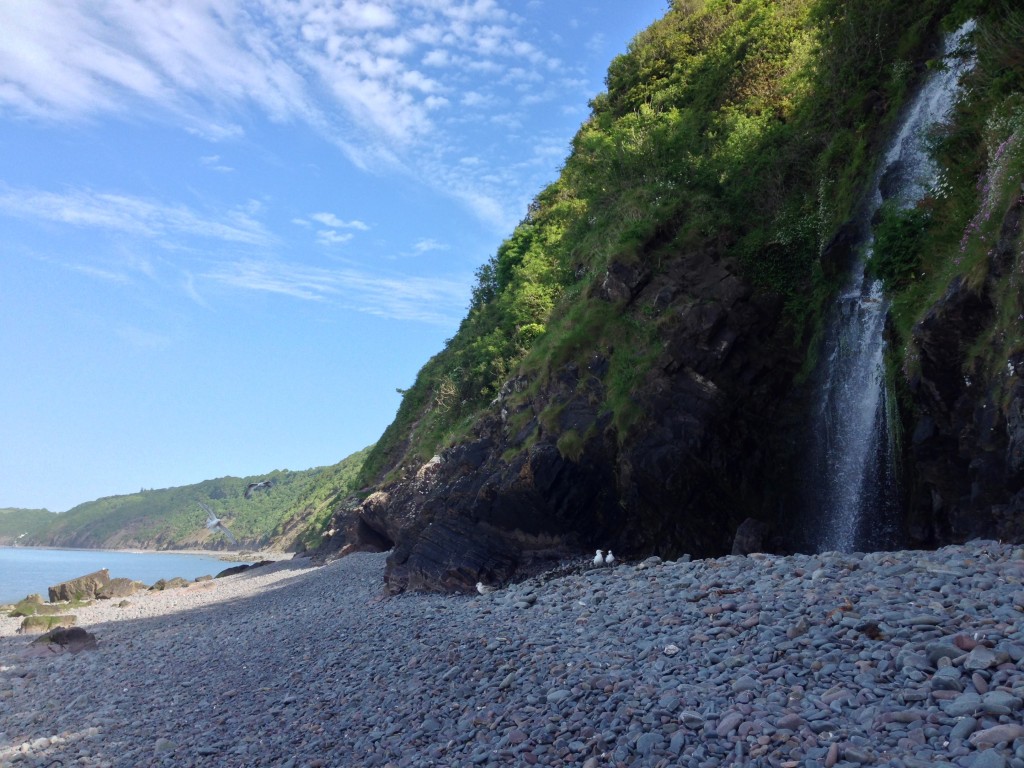
Judged by the Trip Advisor comments, taking a Clovelly Village Tour is a ‘MUST’.
Clovelly was such a magical place! I’d love to go back again!